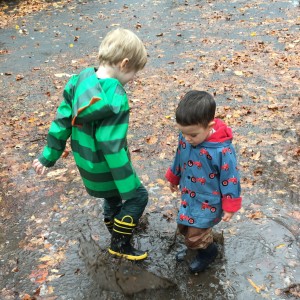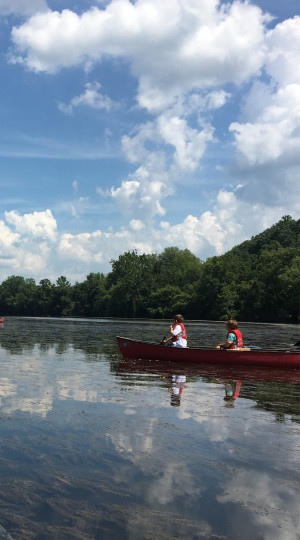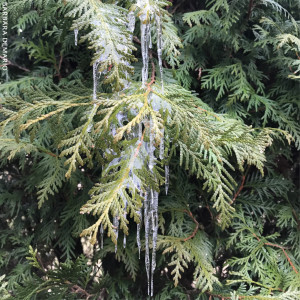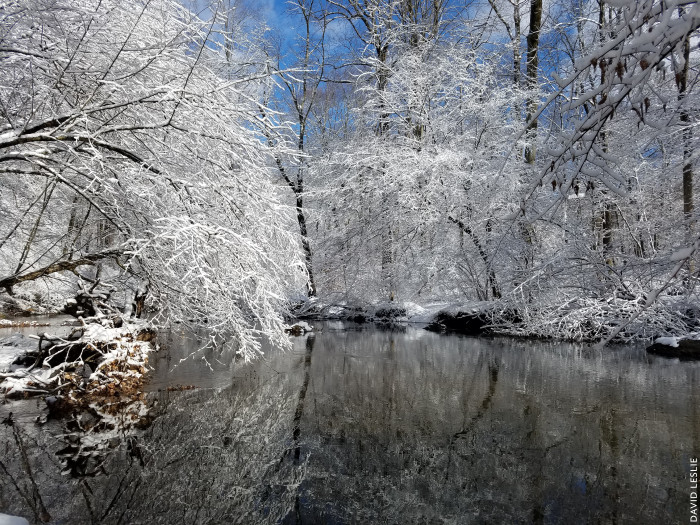By Mike Weilbacher, Executive Director
“When the well’s dry, we know the worth of water.”
Ben Franklin, Poor Richard’s Almanac
Water is essential, both to our planet and to our programming. School groups search for living creatures in our ponds while Nature Preschoolers stomp through puddles and play in the mud kitchen. Summer campers hike along creeks, raft in whitewater, and snorkel in the ocean, while University of Nature adults discuss global water issues.
This will happen even more in the New Year, as 2018 will be the Year of Water across our programming. We’ll begin with the Richard L. James Lecture on February 8, inviting six prominent thinkers to talk about water and end next November, when the Henry Meigs Environmental Leadership Award is given to a visionary regional leader whose work revolves around water.


 In between, water will play a prominent role across the Schuylkill Center. Sandi Vincenti, director of Nature Preschool, notes that her students will use the Year of Water “to answer four big questions: Where does water come from? Where does water go? What can water do? And how does water support life?” Education director Aaliyah Green Ross adds, “The theme of water is infinitely broad; it touches all aspects of our lives. To celebrate the Year of Water, our Naturepalooza Earth Day Festival will overflow with activities and demonstrations exploring everything from aquatic organisms to urban watersheds. The theme of water will also course through all 11 weeks of summer camp, with campers discovering water through history, photography, native wildlife, and more.”
In between, water will play a prominent role across the Schuylkill Center. Sandi Vincenti, director of Nature Preschool, notes that her students will use the Year of Water “to answer four big questions: Where does water come from? Where does water go? What can water do? And how does water support life?” Education director Aaliyah Green Ross adds, “The theme of water is infinitely broad; it touches all aspects of our lives. To celebrate the Year of Water, our Naturepalooza Earth Day Festival will overflow with activities and demonstrations exploring everything from aquatic organisms to urban watersheds. The theme of water will also course through all 11 weeks of summer camp, with campers discovering water through history, photography, native wildlife, and more.”
This winter, the Environmental Art program presents a group exhibition of artists working in river systems. “Water has emerged as one of the most urgent topics in the environmental art field in the past few years,” says the program’s director, Christina Catanese, “and the range of artists who are working with, on, and for water is staggering. The art program,” she continued, “will highlight some of these artists through gallery exhibitions, our LandLab residency, and other programs, with a particular focus on how global water challenges are playing out in our region.”
Our land stewardship program will continue tackling the impacts of stormwater and erosion on our property. Steve Goin, our Land and Facilities director, says his team “hopes to plant more than 500 trees this year, many in swales along our driveway to address erosion hotspots,” some perhaps caused by climate-charged runoff from hard rains.
Like we did with our Year of Climate Change in 2016, we’re using the water theme to call attention to a critical issue, as we are deep into a global freshwater crisis that is both growing and under-reported. While Philadelphia is blessed with an abundance of water, an unsettling number of large rivers worldwide—Colorado, Rio Grande, Yellow, Indus, Ganges, Nile—are so overtapped no water from them empties into the sea for months at a time. Already, two-thirds of the world’s population, more than four billion people, face water scarcity for at least one month every year. In addition, more than half the world’s wetlands have disappeared, sea levels continue to rise, and climate change will exacerbate water issues, causing droughts in some places while flooding others.
Ben Franklin was correct—we do know the worth of water when the well is dry. As we work to become better stewards of our natural resources, we’ll be wading into water issues throughout 2018. Hope you join us.
An excerpt of this post was published in our winter 2017 issue of The Quill, our quarterly newsletter.


Pingback: Getting to know rivers through art - Schuylkill Center for Environmental Education